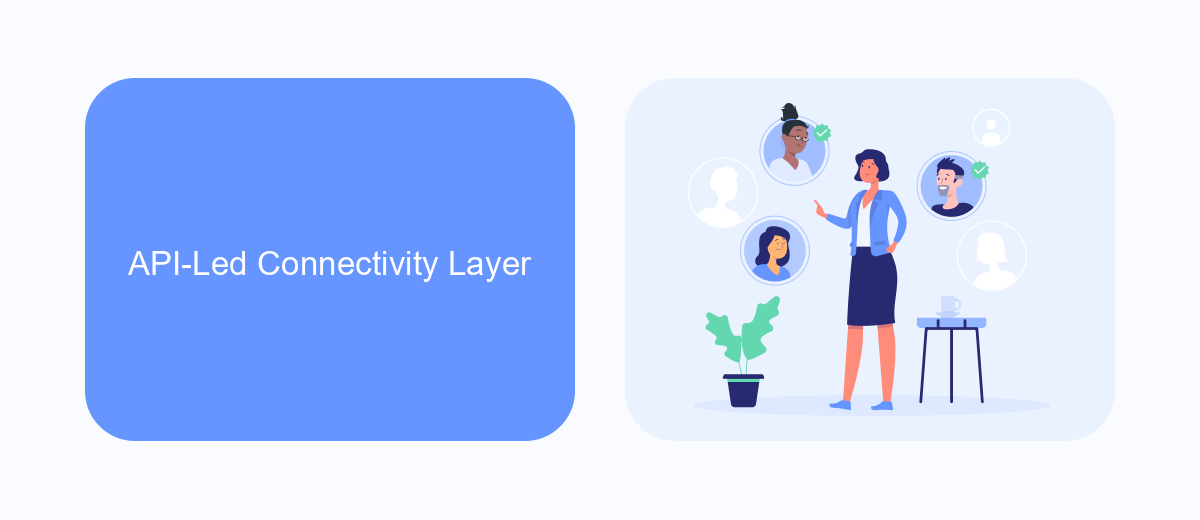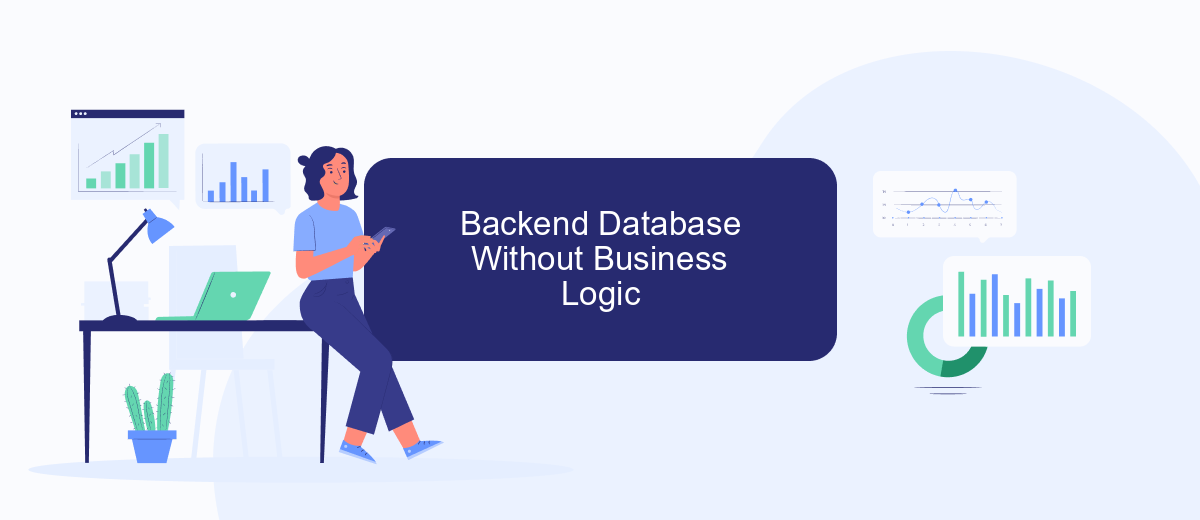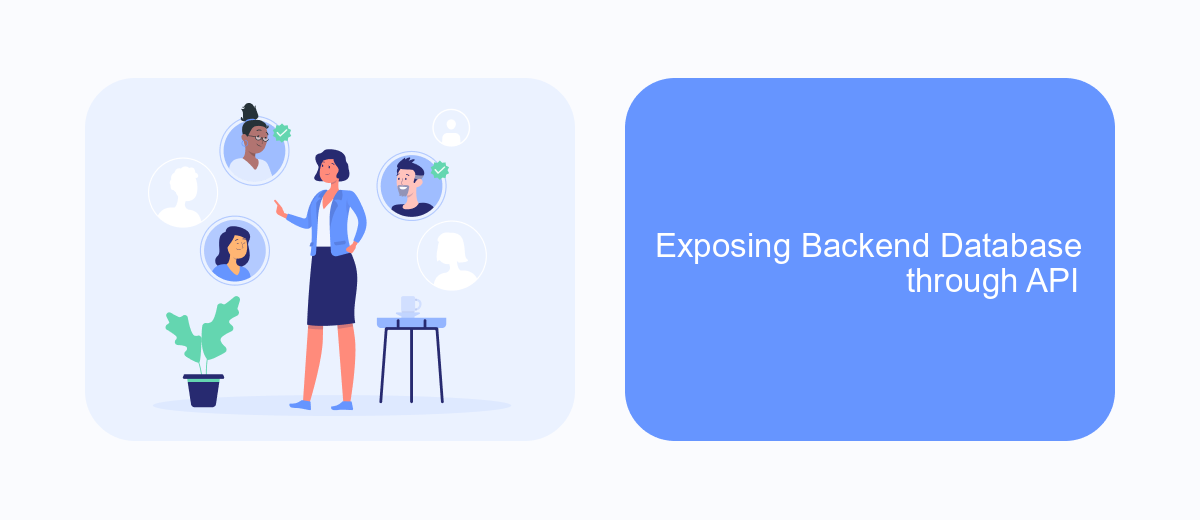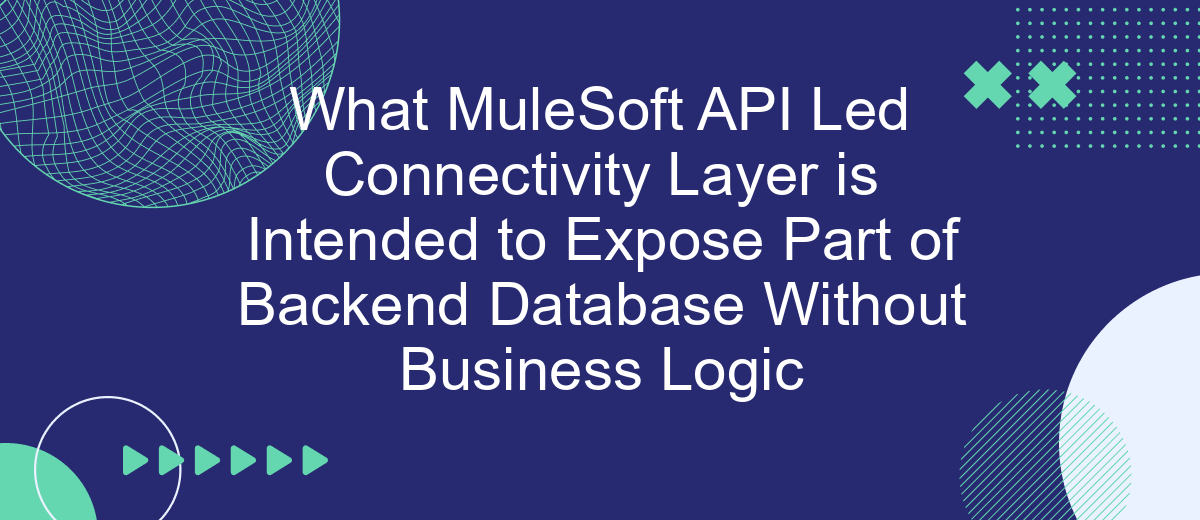The MuleSoft API-led connectivity layer is designed to expose specific parts of the backend database while bypassing business logic. This strategic approach allows for seamless data access and integration, enhancing system interoperability and flexibility. By decoupling data exposure from business processes, organizations can achieve more efficient data management and streamlined operations, paving the way for innovative solutions and improved performance.
Introduction
In today's digital landscape, efficient data access and integration are critical for businesses to maintain agility and competitiveness. MuleSoft's API-led connectivity approach provides a structured methodology to expose backend databases without embedding business logic, thereby ensuring streamlined and secure data flow across various applications and systems.
- Seamless integration with existing backend systems
- Decoupling of business logic from data access
- Enhanced security and governance over data
- Scalability and flexibility for future needs
By leveraging MuleSoft's API-led connectivity, organizations can achieve a more modular and manageable architecture. Tools like SaveMyLeads further enhance this capability by automating lead integration processes, ensuring that data is consistently and accurately transferred between systems. Such integrations enable businesses to focus on their core operations while maintaining robust data management practices.
API-Led Connectivity Layer

The API-Led Connectivity Layer is a strategic approach to integration that enables seamless connectivity between various systems and applications. By exposing specific parts of the backend database through APIs, this layer allows for streamlined data access without embedding business logic. This separation ensures that the core functionalities remain intact and secure, while facilitating efficient data retrieval and manipulation.
One of the key advantages of the API-Led Connectivity Layer is its ability to simplify integration processes. Tools like SaveMyLeads can be instrumental in this context, offering automated solutions to connect different platforms effortlessly. By leveraging such services, organizations can reduce manual intervention, minimize errors, and accelerate the integration lifecycle. This not only enhances operational efficiency but also ensures that the data remains consistent and up-to-date across all connected systems.
Backend Database Without Business Logic

When exposing a part of the backend database without incorporating business logic, it is crucial to focus on data accessibility and security. This approach ensures that the raw data is available for consumption by various applications and services without the complexities and constraints of business logic.
- Ensure secure access: Implement authentication and authorization mechanisms to control who can access the data.
- Data consistency: Maintain data integrity by ensuring that the exposed data is consistent and up-to-date.
- Scalability: Design the database to handle increasing loads without performance degradation.
- Monitoring: Continuously monitor the database to detect and resolve any issues promptly.
Incorporating tools like SaveMyLeads can streamline the process of integrating various applications with the backend database. SaveMyLeads offers an intuitive platform to set up automated workflows, ensuring seamless data flow between systems. By using such services, organizations can reduce the complexity and time required to establish robust integrations, allowing them to focus on leveraging data for strategic decision-making.
Exposing Backend Database through API

Exposing a backend database through an API involves creating a layer that allows external systems to interact with the database without exposing the underlying business logic. This approach ensures that sensitive business rules and processes remain secure while still providing necessary data access.
MuleSoft's API-led connectivity facilitates this by enabling developers to build APIs that connect directly to backend databases. This method promotes a modular architecture, where each API serves a specific purpose and can be reused across different projects. By doing so, it enhances the scalability and maintainability of the integration.
- Data security: APIs can be designed to expose only necessary data, protecting sensitive information.
- Scalability: Modular APIs can be scaled independently, ensuring efficient resource use.
- Maintainability: Reusable APIs reduce redundancy and simplify updates and maintenance.
For businesses looking to streamline their integration processes, services like SaveMyLeads can be invaluable. SaveMyLeads offers automated data transfer between various platforms, reducing the need for manual intervention and minimizing the risk of errors. By leveraging such services, companies can ensure seamless and secure data integration with their backend databases.
Benefits and Considerations
Implementing the MuleSoft API-led connectivity layer to expose parts of a backend database without business logic offers numerous benefits. It enables seamless data integration, allowing different systems to communicate effortlessly. This approach reduces redundancy and ensures data consistency across platforms. Additionally, by decoupling business logic from data access, it allows for more flexible and scalable system architectures. This separation also enhances security, as sensitive business logic remains protected while data is exposed through secure APIs.
However, there are several considerations to keep in mind. Proper API governance is crucial to ensure that the exposed data complies with regulatory requirements and organizational policies. Additionally, performance can be a concern; therefore, optimizing API calls and managing load effectively is essential. Tools like SaveMyLeads can assist in automating and streamlining integrations, making it easier to manage and monitor API interactions. Lastly, thorough documentation and version control are necessary to maintain clarity and consistency as the system evolves.
FAQ
What is the purpose of the API-led connectivity layer in MuleSoft?
How does API-led connectivity improve integration processes?
Can the API-led connectivity layer handle real-time data access?
What are the key components of an API-led connectivity architecture?
How can automation services like SaveMyLeads enhance API-led connectivity?
If you use Facebook Lead Ads, then you should know what it means to regularly download CSV files and transfer data to various support services. How many times a day do you check for new leads in your ad account? How often do you transfer data to a CRM system, task manager, email service or Google Sheets? Try using the SaveMyLeads online connector. This is a no-code tool with which anyone can set up integrations for Facebook. Spend just a few minutes and you will receive real-time notifications in the messenger about new leads. Another 5-10 minutes of work in SML, and the data from the FB advertising account will be automatically transferred to the CRM system or Email service. The SaveMyLeads system will do the routine work for you, and you will surely like it.
